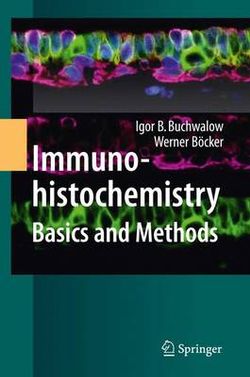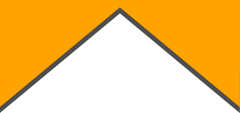Thougheachchapterissmallandintroductory,thishandbook itself is self-suf?cient and provides a comprehensive look at the principles of immunohistochemistry. For readers wanting further depth of knowledge, each chapterisbackedupbyashortlistofcarefullyselectedoriginalarticles. Duringthelastdecade,pioneeringeffortsofhistochemistshaveledtoan- menseimprovementinthereagentsandprotocols. Theresearcherisurgedalwaysto determinethereasonforeverymethodandstepbeforedoingit. Thishandbookis intendedtohelpreaderstoavoidtroublesinthechoiceofanadequatemethod,which happenswhenusingstandardtextbooks. Forthishandbook,wecarefullyselected establishedmethodsandeasy-to-adoptprotocols,payingattentiontomoderndev- opmentsinimmunohistochemistry,suchasantigenretrieval,signalampli?cation, the use of epitope tags in immunohistochemistry, multiple immunolabeling or diagnosticimmunohistochemistry. Eachofthemethodsdescribedinthishandbook v vi Preface was provedby the authors; many of these methods are routinely used in daily practiceintheirinstitute. Allthepracticalmethodsadvocatedareclearlydescribed, withaccompanyingtables,andtheresultsobtainableareillustratedwithcolour micrographs.
Acknowledgements We thank Vera Samoilova forthe perfect technical assistance and other colleaguesfromtheMunsterUniversityClinicforsharingprobesandreagents. IgorB. BuchwalowandWernerBocker Munster Contents 1 AntibodiesforImmunohistochemistry ...1 1. 1 StructureofAntibodies ...2 1. 2 PolyclonalAntibodies ...4 1. 3 MouseMonoclonalAntibodies ...4 1. 4 RabbitMonoclonalAntibodies ...5 1. 5 ProteinAandProteinGinImmunohistochemistry ...7 References ...8 2 AntibodyLabelingandtheChoiceoftheLabel ...9 2. 1 CovalentLabelingofAntibodies ...9 2. 2 Non-CovalentLabelingofPrimaryAntibodieswith LabeledFabFragments ...10 2. 3 EnzymeLabelsforLightMicroscopy ...13 2. 4 FluorophoreLabelsforFluorescenceMicroscopy ...15 2. 5 ColloidalGoldLabelsforElectronMicroscopy ...16 References ...17 3 ProbesProcessinginImmunohistochemistry ...19 3. 1 FixationinImmunohistochemistry ...19 3. 1. 1 FixationinAlcoholsandAcetone ...20 3. 1. 2 FixationinFormaldehyde ...20 3. 1. 3 EffectofFormaldehydeFixationon Antigen-nster Contents 1 AntibodiesforImmunohistochemistry ...1 1. 1 StructureofAntibodies ...2 1. 2 PolyclonalAntibodies ...4 1. 3 MouseMonoclonalAntibodies ...4 1. 4 RabbitMonoclonalAntibodies ...5 1.
5 ProteinAandProteinGinImmunohistochemistry ...7 References ...8 2 AntibodyLabelingandtheChoiceoftheLabel ...9 2. 1 CovalentLabelingofAntibodies ...9 2. 2 Non-CovalentLabelingofPrimaryAntibodieswith LabeledFabFragments ...10 2. 3 EnzymeLabelsforLightMicroscopy ...13 2. 4 FluorophoreLabelsforFluorescenceMicroscopy ...15 2. 5 ColloidalGoldLabelsforElectronMicroscopy ...16 References ...17 3 ProbesProcessinginImmunohistochemistry ...19 3. 1 FixationinImmunohistochemistry ...19 3. 1. 1 FixationinAlcoholsandAcetone ...20 3. 1. 2 FixationinFormaldehyde ...20 3. 1. 3 EffectofFormaldehydeFixationon Antigen- immunohistochemistryhasdevelopedasanimportantinstrumentinresearchand clinicalpathology. A basicunderstandingofunderlying principlesandpotential problemsisunavoidableifyouwanttobesuccessfulinyouruseofimmunohis- chemistry,aswellasingettingyourpaperspublishedandyourresearchgrants funded. Whilemanyexcellenttextsandmonographsexistwhichcovervariousaspects ofimmunohistochemistry,thelackofaconcisecomprehensiveguidetousing thesemethodswasamajormotivationforwritingthisbook.
Ourintentionwasto createaneasy-to-readandfocusedresourcebasedonstate-of-the-artinformation forabroadaudiencerangingfromstudentsandtechnicalassistantstoexperienced researchers. Thishandbookhasaconciseformat,withprotocolsandinstructionsfor methodsimmediatelyfollowingtheshortintroductorytheoreticalmaterialineach chapter. BeingconsciousofthegrowingroleofInternetasaninformationsource, wehavefounditreasonableinmanycasestosubstitutecitingbooksandjournal publications with corresponding Internet websites. Where possible, commercial sourcesofreagents,kits,andequipmentarelistedthroughoutthetextinsteadof inaseparateindex. Thougheachchapterissmallandintroductory,thishandbook itself is self-suf?cient and provides a comprehensive look at the principles of immunohistochemistry. For readers wanting further depth of knowledge, each chapterisbackedupbyashortlistofcarefullyselectedoriginalarticles. Duringthelastdecade,pioneeringeffortsofhistochemistshaveledtoan- menseimprovementinthereagentsandprotocols. Theresearcherisurgedalwaysto determinethereasonforeverymethodandstepbeforedoingit.
Thishandbookis intendedtohelpreaderstoavoidtroublesinthechoiceofanadequatemethod,which happenswhenusingstandardtextbooks. Forthishandbook,wecarefullyselected establishedmethodsandeasy-to-adoptprotocols,payingattentiontomoderndev- opmentsinimmunohistochemistry,suchasantigenretrieval,signalampli?cation, the use of epitope tags in immunohistochemistry, multiple immunolabeling or diagnosticimmunohistochemistry. Eachofthemethodsdescribedinthishandbook v vi Preface was provedby the authors; many of these methods are routinely used in daily practiceintheirinstitute. Allthepracticalmethodsadvocatedareclearlydescribed, withaccompanyingtables,andtheresultsobtainableareillustratedwithcolour micrographs. Acknowledgements We thank Vera Samoilova forthe perfect technical assistance and other colleaguesfromtheMunsterUniversityClinicforsharingprobesandreagents. IgorB. BuchwalowandWernerBocker Munster Contents 1 AntibodiesforImmunohistochemistry ...1 1. 1 StructureofAntibodies ...2 1. 2 PolyclonalAntibodies ...4 1. 3 MouseMonoclonalAntibodies ...4 1. 4 RabbitMonoclonalAntibodies ...5 1. 5 ProteinAandProteinGinImmunohistochemistry ...7 References ...8 2 AntibodyLabelingandtheChoiceoftheLabel ...9 2.
1 CovalentLabelingofAntibodies ...9 2. 2 Non-CovalentLabelingofPrimaryAntibodieswith LabeledFabFragments ...10 2. 3 EnzymeLabelsforLightMicroscopy ...13 2. 4 FluorophoreLabelsforFluorescenceMicroscopy ...15 2. 5 ColloidalGoldLabelsforElectronMicroscopy ...16 References ...17 3 ProbesProcessinginImmunohistochemistry ...19 3. 1 FixationinImmunohistochemistry ...19 3. 1. 1 FixationinAlcoholsandAcetone ...20 3. 1. 2 FixationinFormaldehyde ...20 3. 1. 3 EffectofFormaldehydeFixationon Antigen-AntibodyBinding ...21 3. 2 Paraf?nSectionsforImmunohistochemicalAnalysis ...22 3. 2. 1 EmbeddingandCutting ...22 3. 2. 2 MountingParaf?nSectionsontoSlides ...23 3. 3 CryosectionsforImmunohistochemicalAnalysis ...24 3. 4 BuffersforWashingandAntibodyDilution ...25 3. 5 MountingFollowingImmunohistochemicalStaining ...27 3. 6 StorageFollowingImmunohistochemicalStaining ...28 References ...28 vii viii Contents 4 WorkingwithAntibodies ...31 4. 1 DirectImmunostainingMethod ...31 4. 2 IndirectImmunostainingMethod ...33 4. 3 TheChoiceofAntibodies ...35 4. 3. 1 TheChoiceofPrimaryAntibodies ...35 4. 3. 2 TheChoiceofSecondaryAntibodies ...




Share This Book: